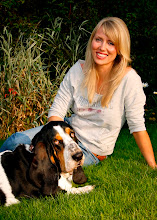
Cats - a brief history
The cats we know today have a long history dating back millions of years. Paleontologists have discovered evidence of a cat with a retractable claw, Miacis, who lived about 50 million years ago. Most scientists believe that the descendants of Miacis and other prehistoric cats divided into three separate groups nearly a million years ago; the big cats (lions and tigers), the cheetahs, and the small cats (ocelots, bobcats and lynxes).
Cats come in many shapes and sizes, but the fur coat found on each feline is a big part of how they are classified; long-haired, short-haired, or "hairless". Long-haired breeds include; Persian, Maine coon, Norwegian Forest Cat and Rag doll. Short-haired breeds include; American Shorthair, Siamese, Burmese and Singapore. While "hairless" cats, such as the Sphinx, merely appear to be hairless, they have a thin layer of hair covering its body.
Cats first started living with people approximately 6,000 years ago. Ancient Egyptian and Mesopotamian farmers domesticated the African wildcats, Felis hybica, a natural hunter, to keep grain storage areas rodent free. Egyptians worshipped Bastet, the cat goddess of fertility, happiness and the moon. Impressed with the cat's natural beauty, Egyptian artists painted and sculpted them, making them cultural icons. Although ancient Egyptians are known for their love of cats, they are not the only people who worshipped them. In Thailand, Siamese cats were sacred temple cats. In Japan, these animals kept Buddhist temples free of mice. In Norwegian mythology, Freya (the goddess of fertility) rode in a chariot pulled by two white cats. Throughout history, sailors and other explorers helped spread cats across the world. Keeping cats abroad their ships was also a good way to rid their living quarters of mice. In time, it was considered lucky to keep cats on board. When cats came to Europe in 900 BC, they crossbred with a native cat found in the British Isles, Felis silvestris. Yet by the middle Ages, cats fell out of favour with most of Europe. The Catholic Church connected cats and those who lived with them with paganism, devil worship, and witchcraft. Superstitious people believed that cats (especially black cats) had diabolical powers.
Today, cats are the UK’s favourite pet with an estimated population of 9.2million. Walk the Dog is proud to support the Cats Protection League Hemel which helps rehome and foster cats. Show your support for Britain’s best loved pet by logging onto http://dacorum.cats.org.uk/
Cats first started living with people approximately 6,000 years ago. Ancient Egyptian and Mesopotamian farmers domesticated the African wildcats, Felis hybica, a natural hunter, to keep grain storage areas rodent free. Egyptians worshipped Bastet, the cat goddess of fertility, happiness and the moon. Impressed with the cat's natural beauty, Egyptian artists painted and sculpted them, making them cultural icons. Although ancient Egyptians are known for their love of cats, they are not the only people who worshipped them. In Thailand, Siamese cats were sacred temple cats. In Japan, these animals kept Buddhist temples free of mice. In Norwegian mythology, Freya (the goddess of fertility) rode in a chariot pulled by two white cats. Throughout history, sailors and other explorers helped spread cats across the world. Keeping cats abroad their ships was also a good way to rid their living quarters of mice. In time, it was considered lucky to keep cats on board. When cats came to Europe in 900 BC, they crossbred with a native cat found in the British Isles, Felis silvestris. Yet by the middle Ages, cats fell out of favour with most of Europe. The Catholic Church connected cats and those who lived with them with paganism, devil worship, and witchcraft. Superstitious people believed that cats (especially black cats) had diabolical powers.
Today, cats are the UK’s favourite pet with an estimated population of 9.2million. Walk the Dog is proud to support the Cats Protection League Hemel which helps rehome and foster cats. Show your support for Britain’s best loved pet by logging onto http://dacorum.cats.org.uk/

